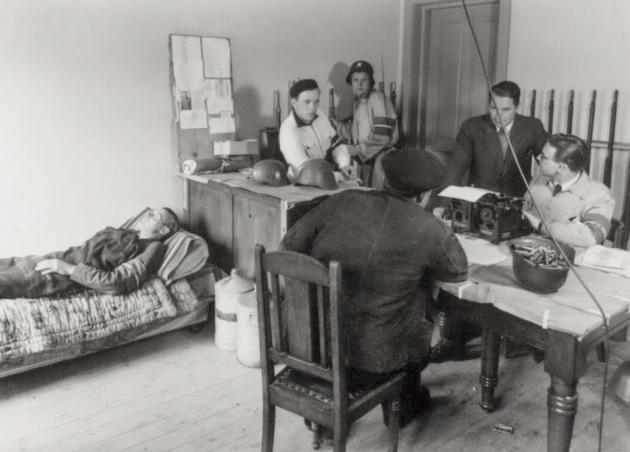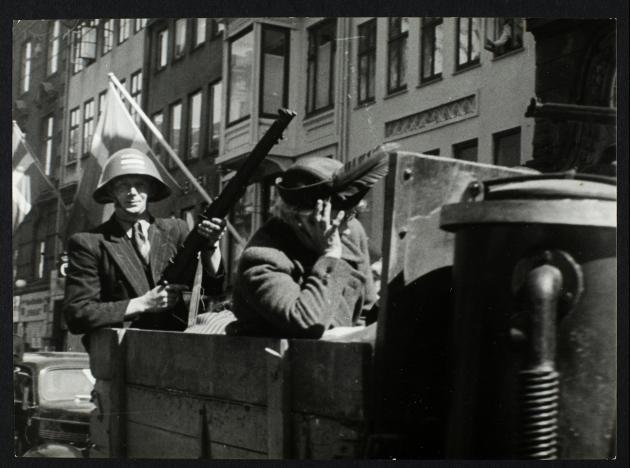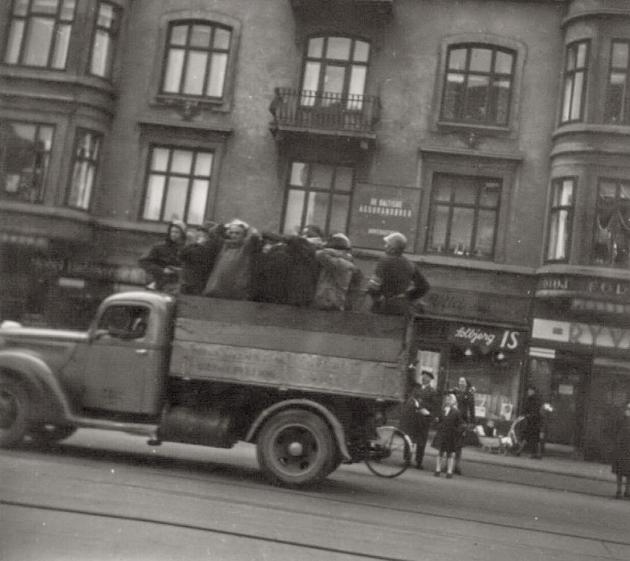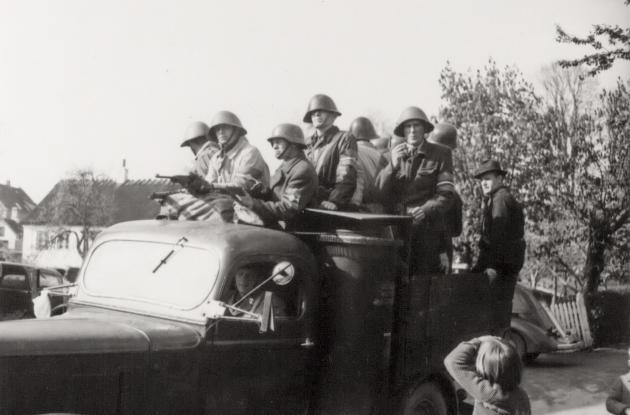From festivities to a dangerous public mood
The blackout curtains had hardly burned out before traitors, snitches and collaborators had to be held accountable for their actions, and in some places the atmosphere in the street changed.

Photo: Svend Türck
The liberation was first and foremost a day of joy, but the day was also marked by the confrontation with snitches, traitors, Eastern Front volunteers, HIPOs, guardsmen and so-called horizontal collaborators. These people were seen as traitors to the country – particularly in the illegal press, where they had been named and shamed throughout the occupation. For example, at the beginning of the occupation,10 commandments for Danes was published, written by the young student Arne Sejr, in which commandment number nine read:
“You must deal with Traitors according to Merit.
“
And some Danes took that offer to heart in the days after the liberation.
Showdown under the cover of the unrest
It happened that even innocent people were given a humiliating ride in the beds of the resistance fighters' trucks. Seen through today's eyes, it can be difficult to understand why girls who happened to be in love with German soldiers should suffer such consequences. But these girls in particular had been victims of contempt and humiliation, and in several of the illegal newspapers you could find a so-called Blue book at the back, where female acquaintances of the German armed forces were listed with full names, addresses and detailed descriptions. And now they had to pay for their betrayal.

Photo: Gregers Hansen
Even though the leadership of the resistance movement, the so-called Freedom Council, tried to rein in the worst aspects of the mood at the time, the days of liberation were chaotic. It was difficult to completely curb false statements, attacks on the pro-German and personal confrontations under the cover of general unrest.

Photo: Ophav ukendt
We have many thousands of images from the occupation in our collections at Royal Danish Library. There are photographs of everyday life with rationing and bomb shelters, and photographs from public events such as community singing and Christmas markets. There are pictures of parades in the streets, and of sabotage and schalburgtage and, of course, of liberation. Many were taken by press photographers such as Holger Damgaard and Erik Petersen, both from Politiken, but there are also private recordings among the photos.
See more pictures from the years 1940-1925 and the liberation
You can explore the many thousands of images from the years 1940-1945 and the liberation in our digital collections.
